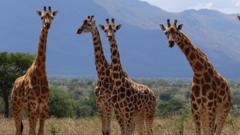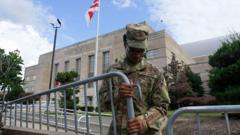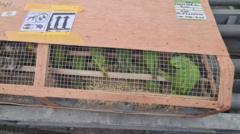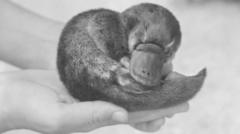In a harrowing incident in Romania's picturesque mountains, a motorcyclist succumbed to fatal injuries after being attacked by a bear. The man, who had parked near a scenic spot on the popular Transfagarasan road, was dragged down an 80-meter ravine by the bear. Emergency responders found him deceased upon arrival. This tragic event raises alarms about the growing number of human-bear interactions as the country's bear population continues to thrive, prompting debates over wildlife management and public safety.
Bear Attack Claims Life of Motorcyclist in Romania's Transfagarasan Mountains
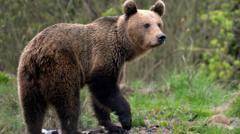
Bear Attack Claims Life of Motorcyclist in Romania's Transfagarasan Mountains
A tragic encounter between a bear and a motorcyclist highlights increasing human-wildlife conflicts in Romania.
The bear attack on the motorcyclist occurred Tuesday morning when the victim stopped at a favored tourist location along the Transfagarasan route. Tragically, the bear overwhelmed him, pulling him down a steep drop, ultimately leading to his death. Ion Sanduloiu, head of the Arges County Mountain Rescue Service, confirmed the grim details to BBC News, noting that although the victim wore protective gear, the injuries sustained were catastrophic.
Authorities had previously placed signs warning tourists against feeding bears, yet encounters like this are becoming more frequent. Following the incident, no immediate actions against the bear were reported, but an investigation has been launched to ensure public safety.
Romania boasts the largest population of brown bears in the European Union, with estimates suggesting between 10,400 and 12,800 bears inhabit the region. The rising number of human-bear interactions in recent years has led to several fatal accidents. Former environment minister Mircea Fechet has stated that the ideal sustainable bear population would be around 4,000, prompting the need for more rigorous management strategies.
Gabriel Paun, from the environmental group Agent Green, criticized the inadequate wildlife management focusing not on overpopulation but rather on systematic failures, including unregulated tourist interactions with bears and insufficient actions from local authorities to control bear movements. He highlighted severe threats to bear habitats from climate change and human activities, emphasizing that Romania is increasingly becoming a hotspot for trophy hunting.
Sanduloiu emphasized the urgency of implementing stricter regulations, proposing harsher penalties for those who engage in behaviors that attract bears or stop to feed them, as the nation seeks to avoid further tragedies like this one. The local government plans to introduce risk zone maps aimed at balancing conservation efforts with the safety of residents and tourists.
As the conversation continues on wildlife management in Romania, the recent fatality underscores the pressing need to harmonize human activities with the protection of wildlife.
Authorities had previously placed signs warning tourists against feeding bears, yet encounters like this are becoming more frequent. Following the incident, no immediate actions against the bear were reported, but an investigation has been launched to ensure public safety.
Romania boasts the largest population of brown bears in the European Union, with estimates suggesting between 10,400 and 12,800 bears inhabit the region. The rising number of human-bear interactions in recent years has led to several fatal accidents. Former environment minister Mircea Fechet has stated that the ideal sustainable bear population would be around 4,000, prompting the need for more rigorous management strategies.
Gabriel Paun, from the environmental group Agent Green, criticized the inadequate wildlife management focusing not on overpopulation but rather on systematic failures, including unregulated tourist interactions with bears and insufficient actions from local authorities to control bear movements. He highlighted severe threats to bear habitats from climate change and human activities, emphasizing that Romania is increasingly becoming a hotspot for trophy hunting.
Sanduloiu emphasized the urgency of implementing stricter regulations, proposing harsher penalties for those who engage in behaviors that attract bears or stop to feed them, as the nation seeks to avoid further tragedies like this one. The local government plans to introduce risk zone maps aimed at balancing conservation efforts with the safety of residents and tourists.
As the conversation continues on wildlife management in Romania, the recent fatality underscores the pressing need to harmonize human activities with the protection of wildlife.

